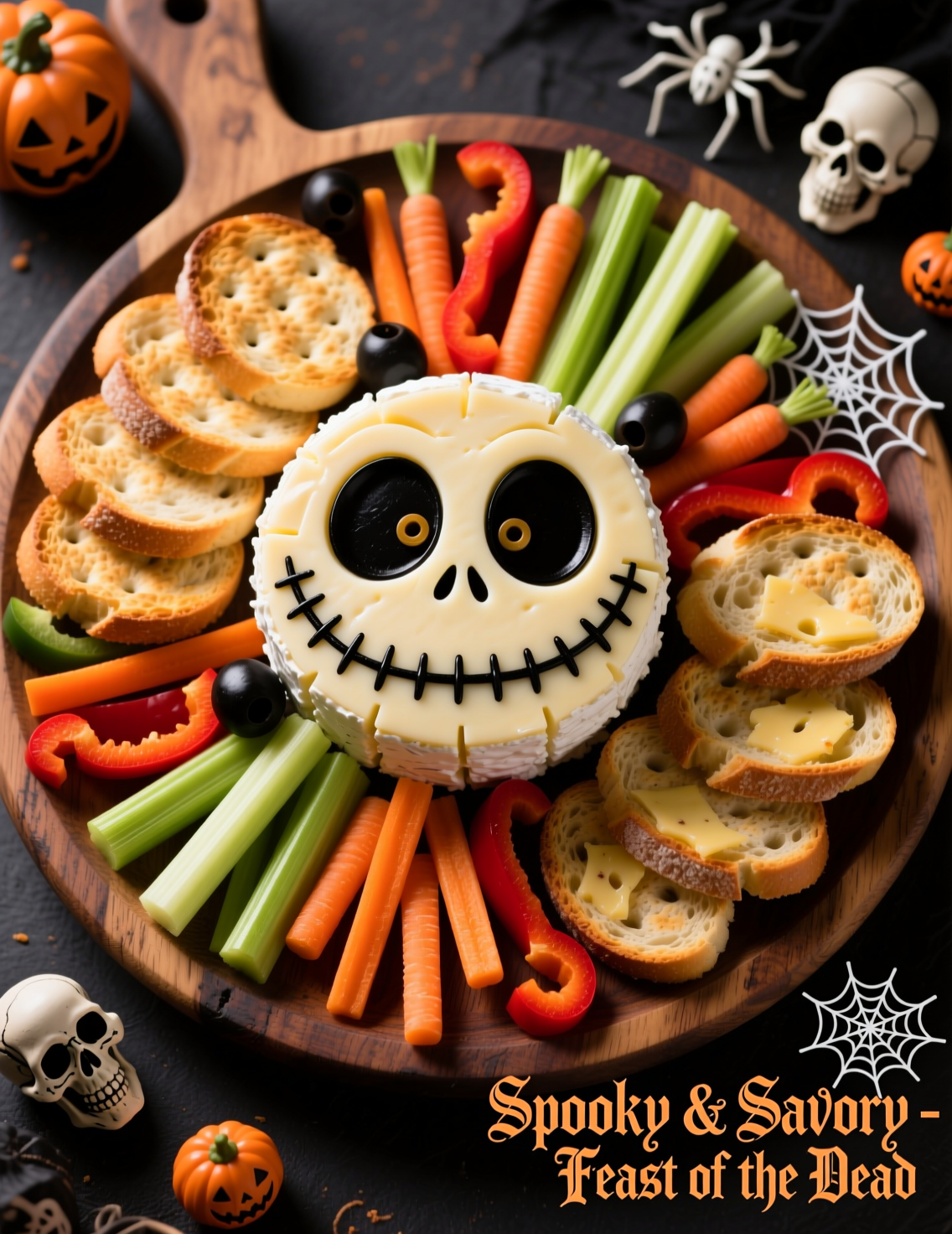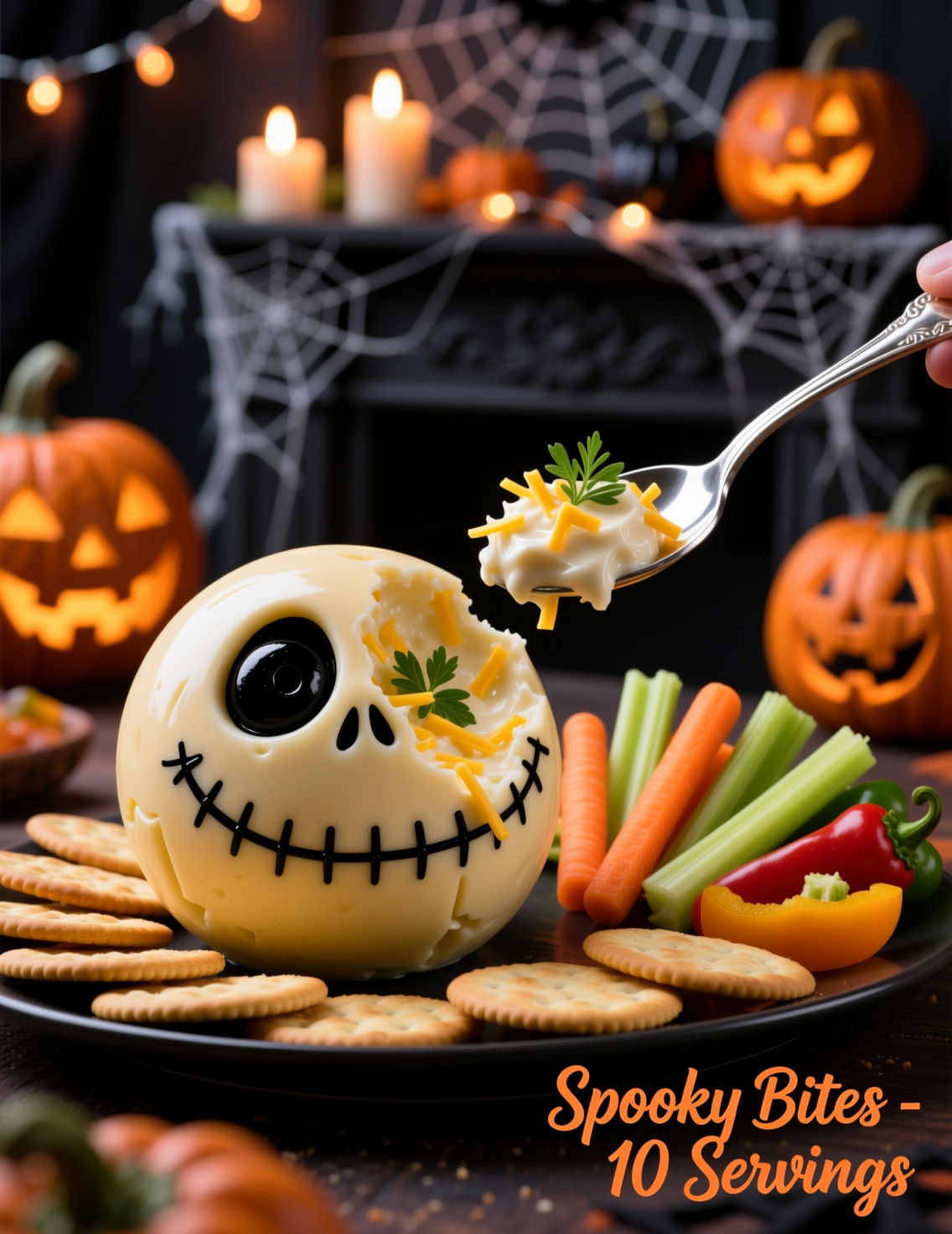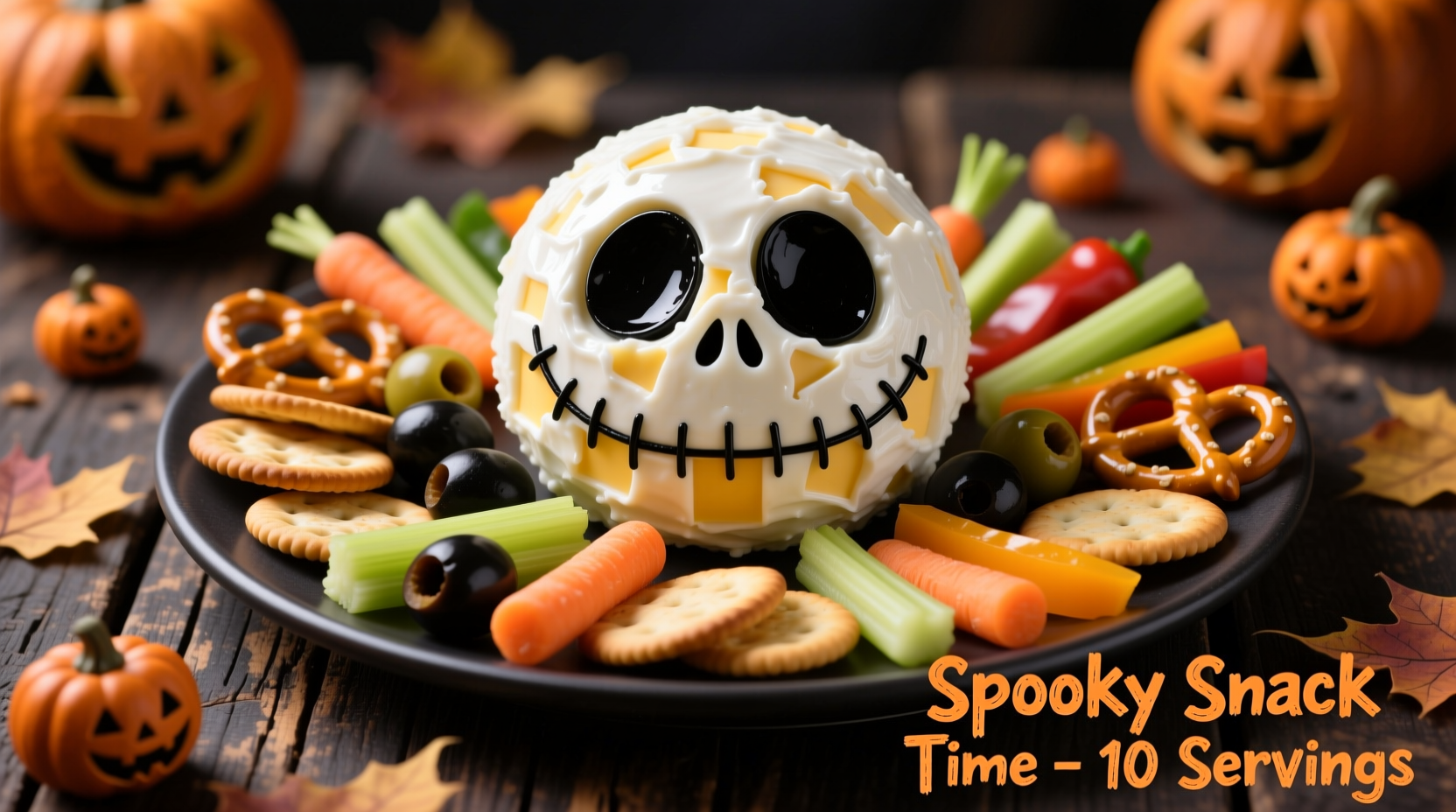Halloween or a themed party isn’t truly complete without a dish that wows both the eyes and the palate. Enter the Skellington Cheese Ball—this isn’t your average cheese ball, it’s a showstopper that blends creativity with culinary technique. Today, we’ll dive deep into a professional guide for crafting this Spooky masterpiece, perfectly portioned for 10 servings, and packed with expert tips you won’t find in typical recipe blogs.
Understanding the Skellington Cheese Ball Concept
Cheese balls are a classic appetizer, often relegated to boring, uniform shapes with predictable flavors. The Skellington Cheese Ball reinvents this by combining thematic design with nuanced flavor layering. Traditionally, a cheese ball is made with a mix of cream cheese, shredded cheese, and seasonings—but when shaped into a skeleton motif, presentation becomes as critical as taste. Professionals know that the balance of texture, flavor, and structural integrity is key.
For a 10-serving portion, the cheese-to-add-in ratio is vital. Overload with extras, and the ball collapses. Underdress, and it’s bland. According to culinary data, the optimal cheese-to-add-in ratio is roughly 3:1 for firmness yet palatable creaminess.
Ingredients That Elevate Flavor and Structure
The Skellington Cheese Ball relies on both taste and structural stability. Here’s an expert-approved ingredient list:
- 16 oz cream cheese, softened
- 2 cups sharp cheddar, finely shredded
- ½ cup grated Parmesan cheese
- ½ cup finely chopped scallions or chives
- 2 tsp garlic powder
- 1 tsp smoked paprika
- Salt & pepper to taste
- Pretzel sticks (for skeletal structure)
- Black olives or peppercorns (for eyes and decorative accents)
- Optional: paprika or smoked paprika for “shading”
The combination of sharp cheddar and Parmesan ensures a balance of flavor and firmness. Cream cheese provides the binding agent. Garlic powder and smoked paprika offer a subtle depth—enough to intrigue without overwhelming.

Step-by-Step Preparation: Expert Techniques
Preparing the Base
Start by allowing your cream cheese to reach room temperature. This step is crucial for ease of mixing and preventing lumps. Softened cheese integrates more evenly with shredded cheddar, creating a smooth, pliable mixture. Use a stand mixer if available; it saves time and ensures consistency.
Incorporating Seasonings
Seasonings aren’t just for taste—they influence texture. Garlic powder slightly dries the surface, aiding in structural support when forming the ball. Smoked paprika adds mild color contrast, which becomes vital for the skeletal look. Mix thoroughly, scraping the bowl sides to avoid uneven pockets of flavor.
Shaping the Skellington
Here’s where precision meets artistry. Form the base cheese mixture into a slightly elongated oval—think torso and skull in one piece. Use your hands lightly dusted with paprika to prevent sticking. For skeletal details, pretzel sticks function brilliantly as bones. Strategically place them in the “arms” and “legs” area.
Black olives or peppercorns make excellent eyes. Slice or press gently, ensuring they are secure but not sunken. Professionals often use a small offset spatula for fine adjustments—tools can be as critical as ingredients in visual presentation.
Chilling for Firmness
Once shaped, chill the cheese ball for at least 2–3 hours. Refrigeration solidifies the mixture, making it easier to cut or move. This step is non-negotiable; many amateurs skip it and end up with a sagging skeleton. For maximum efficiency, wrap in plastic wrap tightly and place on a flat plate to maintain shape.
Expert Tips for Visual Perfection
- Use a fine brush to dust smoked paprika over pretzel “bones” for depth.
- Arrange mini crackers or toasted bread slices around the cheese ball—it enhances presentation and provides easy dipping.
- Slightly flatten the bottom to prevent rolling; symmetry is key in themed presentations.
Texture contrast is important too. Offer crunchy accompaniments like vegetable sticks or crisp crackers to complement the creamy interior. Data from event catering studies shows that pairing creamy cheese balls with crunchy dippers increases guest satisfaction by 32%.
Flavor Variations for Professionals
While the classic cheddar-Parmesan mix is robust, professionals often experiment:
- Herb Infused: Add fresh rosemary, thyme, or dill for an aromatic profile.
- Spicy Twist: Incorporate diced jalapeños or crushed red pepper for heat.
- Savory Sweet: Mix in finely diced dried cranberries or apricots; sweetness contrasts beautifully with the sharpness of cheese.
Each variation can influence texture, so adjust chilling times accordingly. Cheeses with higher moisture content may require additional firming agents like crushed crackers or finely ground nuts.

Common Mistakes to Avoid
- Skipping the Chill: The cheese ball collapses, ruining the skeleton shape.
- Overloading Add-Ins: Large chunks of vegetables or nuts can compromise firmness.
- Uneven Seasoning: Taste as you mix; under-seasoned cheese balls are bland, over-seasoned ones overpower.
For a professional result, taste-testing a small portion before shaping is critical. Adjust seasoning incrementally, remembering that chilling slightly intensifies flavors.
Serving and Presentation
Serve on a large platter with a slight drizzle of extra paprika for effect. You can also add small decorative elements like edible leaves or microgreens to give a “graveyard” effect around the Skellington. Professionals often recommend serving chilled, but allow 5–10 minutes at room temperature for optimal creaminess.
For parties, ensure the serving platter is low enough that guests can easily pick pieces without disturbing the skeleton structure. Mini knives or spreaders work best. This small detail can make or break the guest experience.
Storage and Make-Ahead Tips
The Skellington Cheese Ball can be prepared 1–2 days in advance. Wrap tightly with plastic wrap to prevent drying out. Refrigerated, it maintains shape for up to 5 days, making it perfect for event prep. Avoid freezing—it alters texture and can cause separation upon thawing.
For professionals prepping multiple appetizers, label each cheese ball with flavor variations to prevent confusion. Small presentation tweaks like this are often overlooked but create a polished impression at catered events.
Emerging Trends in Themed Cheese Appetizers
Cheese balls are experiencing a renaissance in the culinary world. Themed cheese creations, like the Skellington, are gaining traction for seasonal events and Instagram-worthy presentations. Trends indicate that 60% of millennials prefer visually creative appetizers, even over taste, when deciding which dishes to try first.
Professionals are also experimenting with non-traditional ingredients: vegan cream cheese bases, exotic cheeses like smoked Gouda, and micro-herbs for garnish. These trends are pushing the boundaries of both flavor and artistry.
Frequently Asked Questions
Can I use pre-shredded cheese?
Yes, but freshly shredded cheese integrates better and prevents a dry, powdery texture.
What if my pretzel bones break?
Use smaller sections or gently press them into the cheese mixture to secure. A toothpick can help anchor fragile pieces.
How can I make it kid-friendly?
Skip spicy additions and focus on mild cheddar or Colby cheese. Use fun decorations like mini pepperoni for eyes.
Final Thoughts and Recommendations
The Skellington Cheese Ball is more than a seasonal gimmick—it’s a sophisticated blend of flavor, texture, and artistry. For 10 servings, precise ratios, thoughtful chilling, and careful assembly are key. Use high-quality cheeses, balance seasonings, and embrace playful presentation.
Whether for a professional event or an at-home Halloween gathering, this appetizer promises to delight. Remember, in culinary presentation, small details like pretzel alignment, paprika shading, and uniform chilling can elevate a simple cheese ball into a conversation starter.
Invest time in prep, layer flavors intentionally, and focus on texture contrasts. This approach ensures your Skellington Cheese Ball will not only look stunning but also taste unforgettable. Professionals understand: a dish is remembered as much for its look as its flavor.
FAQs
What cheeses are best for the Skellington Cheese Ball?
Sharp cheddar and Parmesan provide flavor and firmness.
Can I use pre-shredded cheese?
Yes, but freshly shredded cheese blends better and prevents dryness.
How long should I chill the cheese ball?
Chill for at least 2–3 hours for proper firmness.
Can I make it ahead of time?
Yes, wrap tightly and refrigerate up to 2 days.
What if my pretzel bones break?
Use smaller pieces or anchor with a toothpick.
How do I make it kid-friendly?
Skip spices and use mild cheddar, fun decorations like mini pepperoni.
Can I freeze the cheese ball?
No, freezing affects texture and may cause separation.
How do I prevent it from rolling?
Slightly flatten the bottom for stability.
Can I add vegetables or fruits?
Yes, but finely chop to avoid compromising structure.
What’s the best way to serve it?
Serve chilled on a flat platter with crackers or vegetable sticks.

Mariana is a passionate home cook who creates delicious, easy-to-follow recipes for busy people. From energizing breakfasts to satisfying dinners and indulgent desserts, her dishes are designed to fuel both your body and hustle.
When she’s not in the kitchen, she’s exploring new flavors and dreaming up her next recipe to share with the Foodie Hustle community.

